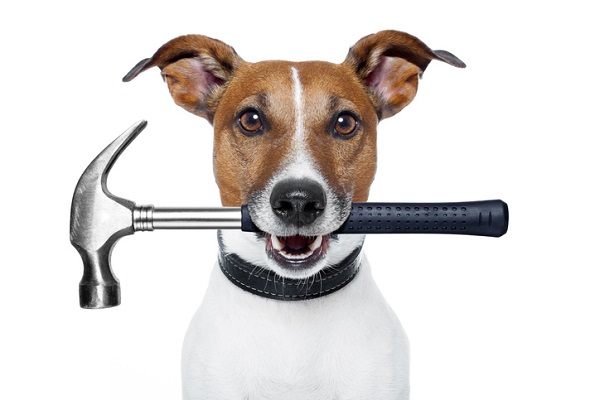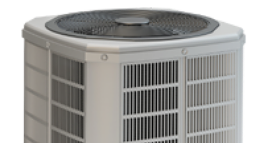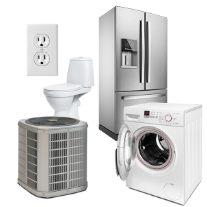Tools can be expensive, but they’re essential to maintaining your home. What are some of the tools all homeowners will need? Let’s look at 12 tools every homeowner needs and a few things to consider as you purchase them.
Screwdrivers
You’ll want at least two Phillips-heads and two flatheads.
A Phillips-head screwdriver is the one with an X-shape, and it’s a tool every homeowner should have. Many of the screws that you’ll need to tighten and remove require a Phillips-head. You should start by purchasing a 0 and 2 Phillips-head.
Make sure you also have flatheads available. You’ll want at least two flathead sizes—1/8-inch tip and 3/16-inch tip.
If you want to avoid a mess of different screwdrivers, opt for a handle that works with interchangeable tips. Additionally, as the years go by, you’ll likely need to add smaller and larger sizes to your toolbox. But the above options are the best place to start for screwdrivers.
Clamps
Clamps are essential for keeping things in place while you work on them. There are several sizes and styles of clamps. When choosing, determine how heavy and bulky the items you need to hold in place may be. When in doubt, start small and work your way up.
Allen Wrench (Hex Key)
If you’ve ever built furniture from Ikea, chances are you have an Allen wrench. It’s an L-shaped tool with a hexagon at the tips.
There are several sizes of Allen wrenches. Fortunately, you can typically buy them in sets. However, it’s a good idea to double-check whether the hex key you’re buying is metric or imperial (SAE).
Generally, popular metric hex keys are 2.5 mm, 3 mm, 4 mm, 6 mm, 8 mm, and 10 mm. Popular SAE hex keys include 1/8 inch, 3/32 inch, 7/64 inch, 5/32 inch, 3/16 inch, 1/4 inch, and 7/32 inch.
For a conversation table, click here.
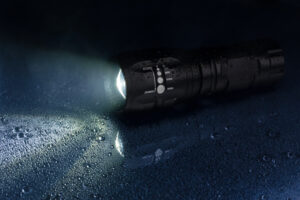
4. Flashlights
Nothing’s worse than tripping a circuit or losing power and not having a flashlight. While your smartphone might work in a pinch, it’s safer and more reliable to have a few dedicated flashlights on hand, along with batteries for them.
To start, consider purchasing a small LED flashlight and a larger LED flashlight or Maglite. That way, if you need a light but also need to use your phone (e.g., to watch a video on how to fix something), you can use both. Additionally, though you always hope you don’t need to use it this way, a Maglite can serve as a way to defend yourself against things that go bump in the night.
Wrenches (Combination or Adjustable)
Purchase some adjustable wrenches in different sizes so that you can work with hexagonal nuts and bolts (not to be confused with hex sockets, which is what your Allen wrench is for).
However, you can also purchase a set of combination wrenches, which come with an open wrench on one end and a boxed wrench on the other. Again, be sure to check which kind you’re purchasing, as these come in both metric and SAE sizes.
Hammer
Hammers are a standard for homeowners, whether you’re handy or not. Head to your local hardware store to test different sized hammers out, because it’s important that you find one that feels good in your hand.
An all-purpose hammer that can handle a variety of tasks is a great start. But if your hammer of choice is on the smaller side and you only use it for simple tasks like hanging pictures, you may want to pick up something more substantial for bigger DIY projects.
Additionally, you may want to consider a sledgehammer, which can help you dispose of things like old wood furniture and box springs properly.
Level
Levels are essential for hanging art, shelving, and pictures properly. And you likely don’t need anything fancy. A simple floating-bubble level can help you straighten the things you want to hang both vertically and horizontally.
Measuring Tape
A measuring tape is crucial for homeowners. It can prevent you from buying major appliances—like a fridge or oven—that are too big for your kitchen. Same goes for furniture, blinds, and window dressing. To start, you’ll need a simple 3/4-inch retractable measuring tape. These are sturdy, useful, and not too big for most projects.
Utility Knife
Whether you’re opening a box or cutting carpet, a quality utility knife is absolutely necessary in any homeowner’s toolbox. A utility knife can also help you scrape off paint and gunk from stuck windows.
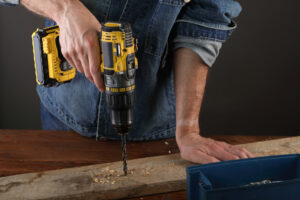
Power Drill and Drill Bits
Power drills can make DIY projects much quicker. The thing many homeowners forget to invest in, though, is a good set of drill bits. To start, consider a set of wood drill bits and universal drill bits. If you’re ambitious, get a set of metal drill bits as well.
Power drills come both cordless and corded, and it’s truly a matter of taste. If you choose corded power drills, be sure to have extension cords—both indoor and outdoor—available. If you choose a cordless power drill, you’ll want to remember to charge the battery after every use.
Electrical Cord
Otherwise known as an extension cord, it’s important to have a few electrical cords on hand at all times.
Be advised that not all extension cords are created equal. For instance, you want to avoid using an indoor extension cord outdoors, as it doesn’t have the same insulation as a dedicated outdoor extension cord will have. Likewise, NEVER daisy-chain a three-prong cord with a two-prong cord. Doing so can shock or electrocute you.
Toolbox
You’re going to need a place to store all of your new tools, so don’t forget the toolbox. The good news is that many hardware stores sell toolboxes that include many of the tools above. This can help you get started on your toolset if you’re starting from scratch.

Bonus: A 2-10 HBW Home Service Plan
A Home Service Plan from 2-10 Home Buyers Warranty (2-10 HBW) can be a huge budget saver in your toolbox! When things break down unexpectedly, let 2-10 HBW help you find an affordable solution with convenient access to our professional Contractor Network.


